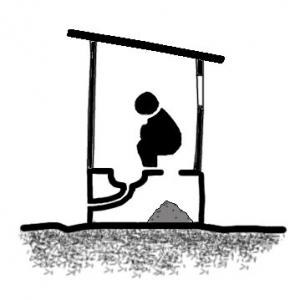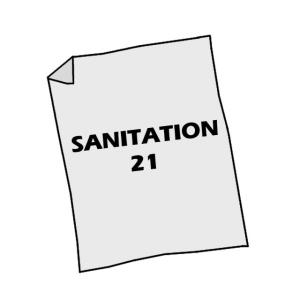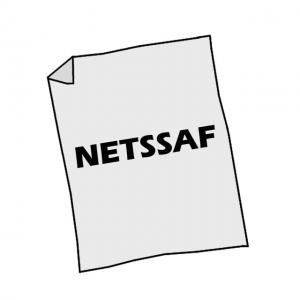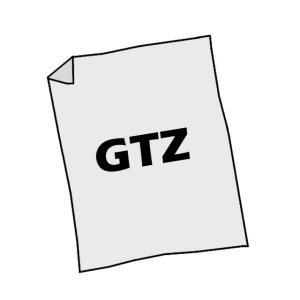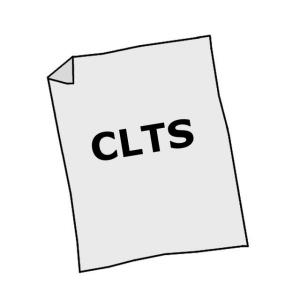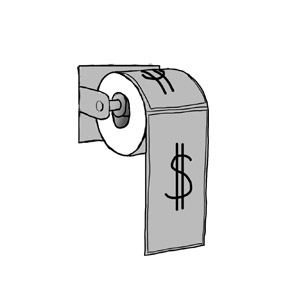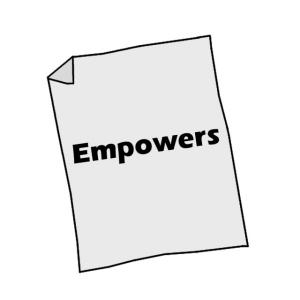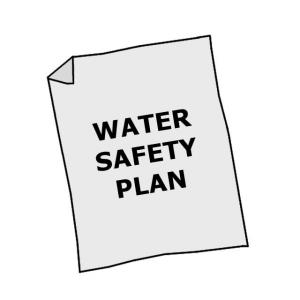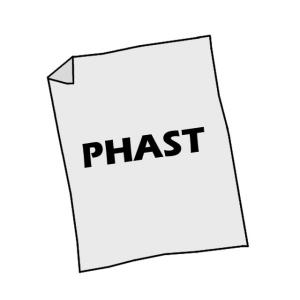Executive Summary
A urine-diverting dry toilet (UDDT) is a simple, low-cost, on-site toilet that operates without water and has a divider so that the user, with little effort, can divert the urine away from the faeces. The separately collected urine and the dried faeces can be used as fertiliser in crop production. Adding wood ash, lime, dry earth, etc. after defecation helps in lowering the moisture content. Ash and lime also help to raise the pH, which enhances pathogen die-off during storage. For security, urine is stored before usage in order ensure pathogen die-off. Dried faeces material can be composted or stored and further dried before using them as soil amendment for crop production.
| In | Out |
|---|---|
Urine, Faeces, Anael Cleansing Water, Dry Cleansing Material |
Urine, Faeces, Anael Cleansing Water, Dry Cleansing Material, Fertiliser, Compost/Biosolids |
Introduction[/no-ecompendium]
The UDDT is built such that urine is collected and drained from the front area of the toilet, while faeces fall through a large chute (hole) in the back. The liquids are diverted from the faeces in order to keep the processing chamber contents dry. Depending on the Collection and Storage/Treatment technology that follows, drying material such as lime, ash or earth should be added into the same hole after defecating. This helps in lowering the moisture content and raise the pH. The system thus creates conditions of dryness, raised pH and time for pathogen die-off (WINBLAD et al. 2004). If wet anal cleansing habits prevail in a community, anal cleansing water must be diverted (e.g. by providing a separate washbowl or by building 3-hole separating toilets).
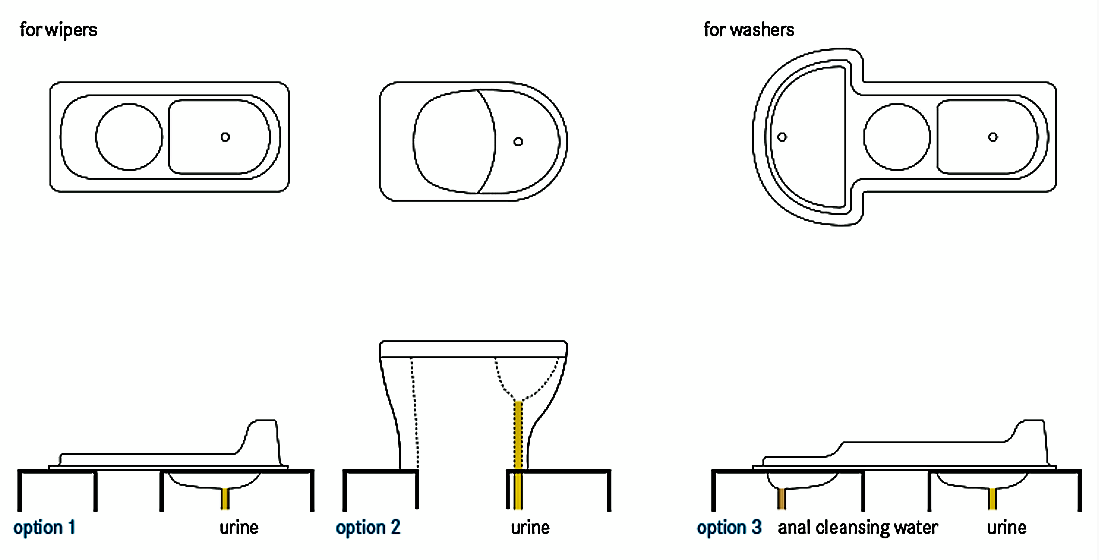
Urine is collected in containers for direct use, storage, further processing (desiccation, struvite production, etc.). Hygienised urine can be used at small or at large scale, or locally discharged by infiltration into the soil (e.g. evapotranspiration bed). Faeces collected in UDDTs can either be dehydrated (storage and dehydration) or composted (co-composting small-scale or large scale) before they are used as soil amendment.
[no-ecompendium]Types of UDDTs[/no-ecompendium]
There are two distinct types of UDDTs: double-vault UDDTs and single-vault UDDTs. In order to facilitate collection of the finished compost-like material (desiccated faeces and cover material), the former ones are designed to operate in batches whilst the latter ones provide only one collection cum storage compartment for containment of faeces. Therefore, off-site storage and drying or secondary treatment (e.g. co-composting small-scale or large scale, etc.) have to be planned for. In general, UDDTs are built entirely above ground to provide for easy access to the processing chambers, which are placed on a solid floor of concrete, bricks or clay and the floor is built up to at least 10 cm above ground so that heavy rains do not flood it (WINBLAD et al. 2004).
Note that in some countries UDDTs are also referred to as composting toilets. This is sometimes misleading as urine-diversion dehydration toilets and composting toilets operate in slightly different ways.
Double-Vault Urine Diverting Dehydration Toilets
Present-day designs of double-vault UDDTs are based on the Vietnamese double-vault dry toilet, which was developed in the 1960s by local authorities (WINBLAD et al. 2004). Adapted to local needs and climatic conditions (e.g. toilet seats, anal cleansing water diversion, etc.), double-vault UDDTs have been introduced, amongst other countries, in Bangladesh, China, Ecuador, El Salvador, Guatemala, India, Kenya, Mexico, the Philippines, South Africa, Sweden, Vietnam, Yemen, but also cold-climate countries such as Mongolia, Nepal and Romania as cost-effective sanitation component in rural, peri-urban and urban settings.
With double-vault UDDTs, faecal matter is collected and stored in twin-pit compartments, which are used alternately. Daily deposits are made into one of the compartments. After each use, a handful of cover material (wood ash, sawdust, soil, lime, etc.) is sprinkled over the faeces to absorb moisture and help in speeding up the dehydration process. When one vault is full (which should take roughly one year), the respective compartment is sealed while the other compartment is put in use. The storage time is counted from the date of the last faecal matter contribution to a compartment, and should be at least one year to provide sufficient time for desiccation and hygienisation.
Urine and anal cleansing water must be diverted for practical reasons; urine may be collected separately and be applied as nitrogen-rich liquid fertiliser to agricultural land, and water used for anal cleansing may be infiltrated locally into the soil. The compost-like material (desiccated faeces and cover material, also called compost) can be applied to agricultural land as a soil amendment in order to increase the organic matter content, improve the water-holding capacity and increase the availability of nutrients.
Another popular model, mainly used in Africa and disseminated by the CREPA (Centre Régional de l’Eau Potable et l’Assainissement à faible couts) is the ”Tecpan” UDDT. These UDDTs have metal sheets as vault chamber doors, which are exposed to the sun, in order to absorb heat, transfer it into the vaults and speed up the drying process.
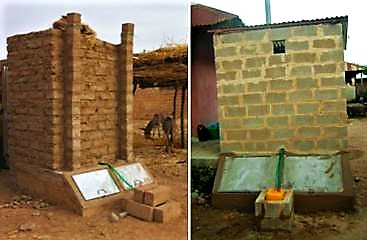
Single-Vault Urine Diverting Dehydration Toilets
Single-vault UDDTs, unlike double-vault UDDTs, provide only one collection cum storage compartment for the containment of faeces. Therefore, secondary storage and drying or other types of treatment (e.g. co-composting, etc.) are necessary. Urine and anal cleansing water diversion is equally important for double-vault UDDTS in order to maintain the dehydration process. The most practical design of single-vault UDDTs is to provide moveable containers. Movable containers allow removing the faeces easily once the container is full without disrupting the functionality of the toilet.

It is recommended to fill the bottom of the movable containers with some dry adding material in order to absorb leaking liquid and increase the stability of the bucket when it is still empty. An empty rice bag can serve as additional confinement for the faeces. It can be easily sealed with a piece of cord once it is full and stored for further drying and hygienisation without transferring the faeces or coming in contact with them. Once the hygienisation period is over, the compost bags can be directly transported for reuse in agriculture, similar to compost bags. “Hanging UDDTs” are specifically adapted to meet the needs of people living in coastal areas. Developed and implemented by the “Water, Agroforestry, Nutrition and Development (WAND) Foundation” in Initao and Libertad, Misamis Oriental, Philippines, hanging UDDTs provide for on-site sanitation in coastal areas that are influenced by tide and/or along river sides that are frequently flooded.
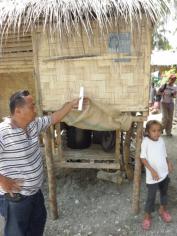
Design Considerations
It is important that the two sections of the toilet are well separated to ensure that a) faeces do not fall into and clog the urine collection area in the front, and that b) urine does not splash down into the dry area of the toilet. There are also 3-hole separating toilets that allow anal cleansing water to go into a third, dedicated basin separate from the urine drain and faeces collection. Both a pedestal and a squat slab can be used to separate urine from faeces depending on user preference. For a worldwide listing of suppliers please see MUENCH et al. 2011 (Appendix 1-3).
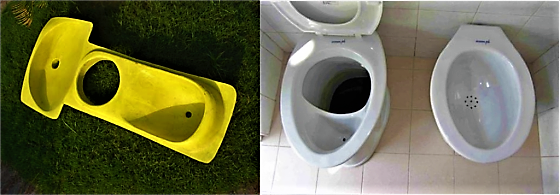
Urine tends to rust most metals; therefore, metals should be avoided in the construction and piping of the UDDT. To limit scaling, all connections (pipes) to storage tanks should be kept as short as possible; whenever they exist, pipes should be installed with at least a 1% slope, and sharp angles (90°) should be avoided. A pipe diameter of 50 mm is sufficient for steep slopes and where maintenance is easy. Larger diameter pipes (> 75 mm) should be used elsewhere, especially for minimum slopes, and where access is difficult. To prevent odours from coming back up the pipe, an odour seal should be installed at the urine drain.
Health Aspects/Acceptance
The UDDT is not intuitive or immediately obvious to some users. At first, users may be hesitant about using it, and mistakes made (e.g., faeces in the urine bowl) may deter others from accepting this type of toilet as well. Demonstration projects and training are essential to achieve good acceptance with users. For better acceptance of the system and to avoid urine in the faeces collection bowl, the toilet can be combined with a urinal, allowing men to stand and urinate.
Operation & Maintenance
A UDDT is slightly more difficult to keep clean compared to other toilets because of both the lack of water and the need to separate the solid faeces and liquid urine. No design will work for everyone and, therefore, some users may have difficulty separating both streams perfectly, which may result in extra cleaning and maintenance. Faeces can be accidentally deposited in the urine section, causing blockages and cleaning problems.
All of the surfaces should be cleaned regularly to prevent odours and to minimize the formation of stains. Water should not be poured in the toilet for cleaning. Instead, a damp cloth may be used to wipe down the seat and the inner bowls. Some toilets are easily removable and can be cleaned more thoroughly. It is important that the faeces remain separate and dry. When the toilet is cleaned with water, care should be taken to ensure that the faeces are not mixed with water.
Because urine is collected separately, calcium- and magnesium-based minerals and salts can precipitate and build up in pipes and on surfaces where urine is constantly present. Washing the bowl with a mild acid (e.g., vinegar) and/or hot water can prevent the build-up of mineral deposits and scaling. Stronger (> 24% acetic) acid or a caustic soda solution (2 parts water to 1 part soda) can be used for removing blockages. However, in some cases manual removal may be required.
An odour seal also requires occasional maintenance. It is critical to regularly check its functioning.
A detailed “To-do list for operation and maintenance” is compiled in RIECK et al. (2012).
Greywater from kitchen, bathrooms, laundry areas, etc. must not be disposed of in the UDDT, but be taken care of individually (e.g. applied to greywater towers, vertical gardens or surface, horizontal or [1851 vertical] flow constructed wetlands, etc.). (TILLEY et al. 2008)
[no-ecompendium]Cost Considerations
(adapted from RIECK et al. 2012)
The construction of a UDDT can usually be done with locally available materials and labour. Prefabricated parts may include toilet seats or squatting pans. If those parts do not need to be imported from abroad, they are usually cheap and can be even cheaper than self-constructed squatting pans made from cement. Squatting pans made of ceramics which are not very costly and easy to maintain, are also available. The construction costs of a double-vault UDDT are slightly higher than the construction costs for a VIP or pit latrine. Single-vault UDDTs can be constructed very cheaply, depending on the creativity of the constructors and the locally available materials.
[no-ecompendium]Additives
Plant ash, lime, dried soil or sawdust can be added after each defecation as a bulking agent to enhance the drying process (JOENSSON et al. 2004). The immediate coverage of the fresh faeces with an additive material can considerably lower nuisances caused by odour or flies. Faster drying also means that the biological degradation is small if sufficient additive is used and thus, the losses of organic matter and N from the faeces to the air are small (JOENSSON et al. 2004). Ash and lime have the additional beneficial effects of raising pH, which leads to improved pathogen die-off (JOENSSON et al. 2004). The addition of ash and lime should therefore be preferred (SCHOENNING & STENSTROEM 2004).
[no-ecompendium]At a Glance
| Working Principle | Urine-diversion dehydration toilets (UDDTs) make use of desiccation (dehydration) processes for the hygienically safe on-site treatment of human excreta. UDDTs divert all liquids (i.e. urine and anal cleansing water, if applicable) from the faeces to keep the processing chamber contents dry. Adding wood ash, lime, etc. after each defecation helps in lowering moisture content and raise the pH. The system thus creates conditions of dryness, raised pH and time for pathogen die-off. Urine is stored anaerobically or infiltrated into the soil, depending on soil and groundwater conditions in the area. Storage of urine generally also leads to a raise of pH and consequent hygienisation. |
| Capacity/Adequacy | UDDTs are mainly suitable for regions with high average temperatures, long dry and short rainy seasons or arid climatic conditions with high evaporation rates. Nevertheless, with the right designs, they can also work in a more humid climate and it is also possible to utilise a UDDT in regions with cold climate conditions. There should be a need for compost or urine as fertiliser. |
| Performance | Depends strongly on user’s operation and maintenance. If not operated properly hygienisation cannot be guaranteed and odour can occur. |
| Costs | Moderate investment costs and low operation costs. |
| Self-help Compatibility | Can be constructed with locally available material. Operation is simple but staff/community should be trained. |
| O&M | Addition of drying material to the faeces after each use. Removal of faeces when vaults are full and changing of urine piping or tanks. Control in order to prevent liquid infiltration into the dehydration chambers. |
| Reliability | High, if the processing chamber(s) are kept dry. |
| Main strength | Low-tech and no requirement of energy. |
| Main weakness | Education and demonstration projects are essential in achieving good acceptance with users as O&M depends strongly on users. |
The UDDT is simple to design and build, using such materials as concrete and wire mesh or plastic. The UDDT design can be altered to suit the needs of specific populations and cultural settings (i.e., smaller for children, people who prefer to squat, etc.). UDDTs are waterless systems that are particularly suitable for conditions where water is scarce or expensive. The products of UDDTs, collected urine and compost, are both valuable fertiliser and need to be either reused correctly on-site or transported to a site where they can be reused or discharged correctly. Therefore, UDDTs are particularly adapted for households or communities with need for such types of fertilising products.
UDDTs are mainly suitable for regions with high average temperatures, long dry and short rainy seasons or arid climatic conditions with high evaporation rates. Nevertheless, with the right designs (i.e. raised constructions), they can also work in a more humid climate and it is also possible to utilise a UDDT in regions with cold climate conditions.
Guidelines on the Use of Urine and Faeces in Crop Production
These guidelines provide a thorough background on the use of urine (and faeces) for agricultural purposes. Aspects discussed are requirements for plant growth, nutrients in excreta, hygiene aspects, and recommendations for cultivation. It provides detailed guidance on the use of urine for purposes.
JOENSSON, H. RICHERT, A. VINNERAAS, B. SALOMON, E. (2004): Guidelines on the Use of Urine and Faeces in Crop Production. (= EcoSanRes Publications Series , 2004 ). Stockholm: EcoSanRes URL [Accessed: 17.04.2012]Ecological Toilets
This book describes how to construct Arborloo toilets and how it can be upgraded to VIPs at a later stage.
MORGAN, P. EcoSanRes (2009): Ecological Toilets. (pdf presentation). Stockholm: Stockholm Environment Institute URL [Accessed: 09.05.2019]Toilets That Make Compost
This book describes in an easy-to-understand and picture-based way how to construct three different low cost sanitation solutions, namely arborloos, fossa alterna and urine diversion toilets.
MORGAN, P. EcoSanRes (2007): Toilets That Make Compost . Stockholm: Stockholm Environment Institute URL [Accessed: 09.05.2019]Technology Review of Urine Diversion Components
The publication explains the purposes of urine diversion, its benefits and challenges, urine precipitation, urine treatment and reuse in agriculture. Further, it provides an overview on design and operational aspects for equipment needed, such as waterless urinals and urine diversion toilets including supplier information and indicative costs. Overall, it pulls together scattered knowledge around the topic of urine diversion in a concise manner.
MUENCH, E. von WINKER, M. (2011): Technology Review of Urine Diversion Components. Overview of Urine Diversion Components such as Waterless Urinals, Urine Diversion Toilets, Urine Storage and Reuse Systems. Eschborn: Deutsche Gesellschaft für Internationale Zusammenarbeit (GIZ) GmbH URL [Accessed: 11.05.2019]Appendix 1 for technology review of urine diversion components
This document contains a worldwide list of suppliers for waterless urinals. The tables of suppliers provided here are not complete listings but give only an indication of available products. If you spot errors or omissions, please contact the authors at ecosan@giz.de. In the brackets below each listing the date for provision of the information/last update of information is given. Please be aware that not all information is from 2011. An entry in this list does not imply a recommendation by GIZ. Costs are indicative only.
MUENCH, E., v. WINKER, M. GIZ (2011): Appendix 1 for technology review of urine diversion components. Worldwide listing of suppliers for waterless urinals. (= Technology Review ). Eschborn: Deutsche Gesellschaft für Internationale Zusammenarbeit (GIZ) GmbH URL [Accessed: 31.05.2019]Appendix 2 of technology review of urine diversion components
This document contains a worldwide list of suppliers for urine diversion squatting pans. The tables of suppliers provided here are not complete listings but give only an indication of available products. If you spot errors or omissions, please contact the authors at ecosan@giz.de. In the brackets below each listing the date for provision of the information/last update of information is given. Please be aware that not all information is from 2011. An entry in this list does not imply a recommendation by GIZ. Costs are indicative only.
MUENCH, E., v. WINKER, M. GIZ (2011): Appendix 2 of technology review of urine diversion components. Worldwide listing of suppliers for urine diversion squatting pans (for UDDTs or for urine diversion flush toilets). (= Technology Review ). Eschborn: Deutsche Gesellschaft für Internationale Zusammenarbeit (GIZ) GmbH URL [Accessed: 29.04.2011]Appendix 3 of technology review of urine diversion components
This document contains a worldwide list of suppliers for urine diversion pedestals/seats (for UDDTs or for UD flush toilets). The tables of suppliers provided here are not complete listings but give only an indication of available products. If you spot errors or omissions, please contact the authors at ecosan@giz.de. In the brackets below each listing the date for provision of the information/last update of information is given. Please be aware that not all information is from 2011. An entry in this list does not imply a recommendation by GIZ. Costs are indicative only.
MUENCH, E., v. WINKER, M. GIZ (2011): Appendix 3 of technology review of urine diversion components. Worldwide listing of suppliers for urine diversion pedestals/seats (for UDDTs or for UD flush toilets). (= Technology Review ). Eschborn: Deutsche Gesellschaft für Internationale Zusammenarbeit (GIZ) GmbH URL [Accessed: 29.04.2011]Smart Sanitation Solutions
Smart Sanitation Solutions presents examples of low-cost household and community-based sanitation solutions that have proven effective and affordable. A wide range of innovative technologies for toilets, collection, transportation, treatment and use of sanitation products that have already helped thousands of poor families to improve their lives is illustrated.
NWP (2006): Smart Sanitation Solutions. Examples of innovative, low-cost technologies for toilets, collection, transportation, treatment and use of sanitation products. (= Smart water solutions ). Amsterdam: Netherlands Water Partnership (NWP) URL [Accessed: 09.05.2019]Technology Review of Urine-Diverting Dry Toilets (UDDTs)
This publication offers a complete overview of UDDT functions, design considerations, common operation and maintenance issues and generalised installation costs. Its focus is on applications in developing countries and countries in transition, although UDDTs are also applicable in developed countries.
RIECK, C. MUENCH, E. HOFFMANN, H. (2012): Technology Review of Urine-Diverting Dry Toilets (UDDTs). Overview on Design, Management, Maintenance and Costs. (= Technology Review ). Eschborn: German Agency for Technical Cooperation (GTZ) GmbH URL [Accessed: 11.05.2019]Guidelines on the Safe Use of Urine and Faeces in Ecological Sanitation Systems
These guidelines provide a thorough background on the safe use of urine and faeces for agricultural purposes. Aspects like the health risk associated we the use of human excreta in agriculture and how to limit them are discussed.
SCHOENNING, C. STENSTROEM, T.A. (2004): Guidelines on the Safe Use of Urine and Faeces in Ecological Sanitation Systems. (= EcoSanRes Publication Series ). Stockholm: Stockholm Environment Institute (SEI)Compendium of Sanitation Systems and Technologies
This compendium gives a systematic overview on different sanitation systems and technologies and describes a wide range of available low-cost sanitation technologies.
TILLEY, E., LUETHI, C., MOREL, A., ZURBRUEGG, C. and SCHERTENLEIB, R. (2008): Compendium of Sanitation Systems and Technologies. Duebendorf, Switzerland: Swiss Federal Institute of Aquatic Science and Technology (EAWAG) and Water Supply and Sanitation Collaborative Council (WSSCC) URL [Accessed: 15.02.2010] PDFCompendium of Sanitation Systems and Technologies. 2nd Revised Edition
This compendium gives a systematic overview on different sanitation systems and technologies and describes a wide range of available low-cost sanitation technologies.
TILLEY, E., ULRICH L., LÜTHI, C., REYMOND P. and ZURBRÜGG C. (2014): Compendium of Sanitation Systems and Technologies. 2nd Revised Edition. Duebendorf, Switzerland: Swiss Federal Institute of Aquatic Science and Technology (Eawag) URL [Accessed: 03.05.2023] PDFEcological Sanitation - revised and enlarged edition
This book is one of the most fundamental and important books that defined the concept of ecological sanitation. The first version came out in 1998 - this version presents the findings of over ten years of research and development in ecological sanitation supported by SIDA (Swedish International Development Cooperation Agency).
WINBLAD, U. SIMPSON-HERBERT, M. (2004): Ecological Sanitation - revised and enlarged edition. (pdf presentation). Sweden: Stockholm Environment Institute URL [Accessed: 04.08.2010]Compendium of Sanitation Systems and Technologies (Arabic)
This is the Arabic version of the Compendium of Sanitation Systems and Technologies. The Compendium gives a systematic overview on different sanitation systems and technologies and describes a wide range of available low-cost sanitation technologies.
TILLEY, E. ULRICH, L. LUETHI, C. REYMOND, P. SCHERTENLEIB, R. ZURBRUEGG, C. (2014): Compendium of Sanitation Systems and Technologies (Arabic). 2nd Revised Edition. Duebendorf, Switzerland: Swiss Federal Institute of Aquatic Science and Technology (Eawag) PDFCost Optimization of Single Door UDDTs - Final Draft
The report provides a detailed description and cost analysis for single door double-vault urine diversion dehydration toilets (UDDTs) in Kenya. Furthermore, optimizations are identified for different components of the UDDT design.
BLUME, St. (2009): Cost Optimization of Single Door UDDTs - Final Draft. URL [Accessed: 07.07.2010]Simple Urine-diverting Dry Toilets (UDDTs) Built with Recycled or Readily Available Materials
The goal of this paper is to show that conversion to using UDDTs can be more a matter of shifting paradigms than capital investment. People can learn the concept and apply it on their own, with materials that they already have access to.
CANADAY, C. (2011): Simple Urine-diverting Dry Toilets (UDDTs) Built with Recycled or Readily Available Materials. Pastaza: Omaere Ethnobotanical Park URL [Accessed: 22.02.2012]Toilets
The first part of a sanitation system is the „user interface“, i.e. the toilet, pedestal, pan or urinal. It is an important part of the sanitation system because this is the part the user comes in contact with. Acceptance of a sanitation system therefore often mainly depends on the acceptance of the user interface. This paper gives an overview on developments of different technologies for user interfaces (UDDTs and urinals). The contributions present developments in different geographical regions: South America, East Africa and the Eastern Europe, the Caucasus and Central Asia (EECCA) countries.
ECOSAN CLUB (2011): Toilets. (= Sustainable Sanitation Practice , 6 ). Vienna: Ecosan Club URLLow-Cost Sustainable Sanitation Solutions for Mindanao and the Philippines. A Practical Construction Field Guide
After a brief introductory chapter on the Philippine sanitation situation and basic principles of sustainable sanitation, the manual focuses on the introduction of different low-cost sanitation solutions comprising the arborloo toilet, the 1-chamber and 2-chamber UDDT, hanging UDDTs, and the ecopee urinal. Each technology is briefly described by giving general information on how it works, operation and maintenance requirements, reuse or safe disposal options, and in which setting this technology might be appropriate. In addition, a picture-based guide on how to construct each technology is provided as well as the necessary technical drawings and rough cost estimates based on current prices. Since a sanitation system does not end with the toilet itself, the last chapter also provides information on the overall management of the system including collection, transport, treatment, and final reuse of urine, feces and composting products in agriculture.
GENSCH, R. MISO, A. ITCHON, G. SAYRE, E. (2010): Low-Cost Sustainable Sanitation Solutions for Mindanao and the Philippines. A Practical Construction Field Guide. Cagayan de Oro City: Xavier University URL [Accessed: 31.05.2019]Urine as Liquid Fertilizer in Agricultural Production in the Philippines
This field guide has been developed to accommodate the ever-increasing demand for more detailed and scientifically backed information on how to use urine in agricultural production. It is intended primarily for practitioners and experts in the water, sanitation, planning, and agriculture sectors, as well as local and national government officials from the various sectors, NGO and individuals interested and working in the field of agriculture and sustainable sanitation in the Philippines and the wider Southeast Asian region.
GENSCH, R. MISO, A. ITSCHON, G. (2011): Urine as Liquid Fertilizer in Agricultural Production in the Philippines. Cagayan de Oro: Sustainable Sanitation Center Xavier University (XU), the Philippine Sustainable Sanitation Knowledge Node, the Philippine Ecosan Network, and the Sustainable Sanitation Alliance (SuSanA) URL [Accessed: 07.05.2019]Ventilation of dry toilets
This thesis aims at showing possibilities to improve ventilation standards of dry toilet facilities. Therefore, numerous structures were monitored over a period of three months, from March to June, in the southwestern districts of Uganda. The considerations and recommendations of this paper should support further development and improve future toilet structures in view of ventilation practices and design purviews. It should therefore contribute to a higher quality and acceptance of the dry toilets in the long term.
GROTH, F. (2005): Ventilation of dry toilets. (= Master Thesis ). Pinkafeld: Fachhochschulstudiengänge Burgenland GmbH URL [Accessed: 11.08.2010]How to Select Appropriate Technical Solutions for Sanitation
The purpose of this guide is to assist local contracting authorities and their partners in identifying those sanitation technologies best suited to the different contexts that exist within their town. The first part of the guide contains a planning process and a set of criteria to be completed; these assist you in characterizing each area of intervention so that you are then in a position to identify the most appropriate technical solutions. The second part of the guide consists of technical factsheets which give a practical overview of the technical and economic characteristics, the operating principle and the pros and cons of the 29 sanitation technology options most commonly used in sub-Saharan Africa.
MONVOIS, J. GABERT, J. FRENOUX, C. GUILLAUME, M. (2010): How to Select Appropriate Technical Solutions for Sanitation. (= Six Methodological Guides for a Water and Sanitation Services' Development Strategy , 4 ). Cotonou and Paris: Partenariat pour le Développement Municipal (PDM) and Programme Solidarité Eau (pS-Eau) URL [Accessed: 19.10.2011]Appendix 1 for technology review of urine diversion components
This document contains a worldwide list of suppliers for waterless urinals. The tables of suppliers provided here are not complete listings but give only an indication of available products. If you spot errors or omissions, please contact the authors at ecosan@giz.de. In the brackets below each listing the date for provision of the information/last update of information is given. Please be aware that not all information is from 2011. An entry in this list does not imply a recommendation by GIZ. Costs are indicative only.
MUENCH, E., v. WINKER, M. GIZ (2011): Appendix 1 for technology review of urine diversion components. Worldwide listing of suppliers for waterless urinals. (= Technology Review ). Eschborn: Deutsche Gesellschaft für Internationale Zusammenarbeit (GIZ) GmbH URL [Accessed: 31.05.2019]Appendix 2 of technology review of urine diversion components
This document contains a worldwide list of suppliers for urine diversion squatting pans. The tables of suppliers provided here are not complete listings but give only an indication of available products. If you spot errors or omissions, please contact the authors at ecosan@giz.de. In the brackets below each listing the date for provision of the information/last update of information is given. Please be aware that not all information is from 2011. An entry in this list does not imply a recommendation by GIZ. Costs are indicative only.
MUENCH, E., v. WINKER, M. GIZ (2011): Appendix 2 of technology review of urine diversion components. Worldwide listing of suppliers for urine diversion squatting pans (for UDDTs or for urine diversion flush toilets). (= Technology Review ). Eschborn: Deutsche Gesellschaft für Internationale Zusammenarbeit (GIZ) GmbH URL [Accessed: 29.04.2011]Appendix 3 of technology review of urine diversion components
This document contains a worldwide list of suppliers for urine diversion pedestals/seats (for UDDTs or for UD flush toilets). The tables of suppliers provided here are not complete listings but give only an indication of available products. If you spot errors or omissions, please contact the authors at ecosan@giz.de. In the brackets below each listing the date for provision of the information/last update of information is given. Please be aware that not all information is from 2011. An entry in this list does not imply a recommendation by GIZ. Costs are indicative only.
MUENCH, E., v. WINKER, M. GIZ (2011): Appendix 3 of technology review of urine diversion components. Worldwide listing of suppliers for urine diversion pedestals/seats (for UDDTs or for UD flush toilets). (= Technology Review ). Eschborn: Deutsche Gesellschaft für Internationale Zusammenarbeit (GIZ) GmbH URL [Accessed: 29.04.2011]Systems for Enhancing Ventilation for Improved Control of Odour and Fly Nuisance in Dry Urine Diverting Ecological Sanitation Toilets
This research report described information for improved ventilation, fly and odour control as well as impact of improved ventilation on drying within faecal chambers and pathogen die-off in dehydration toilets.
OKETCH, M. (2005): Systems for Enhancing Ventilation for Improved Control of Odour and Fly Nuisance in Dry Urine Diverting Ecological Sanitation Toilets. URL [Accessed: 22.07.2010]Technology Review of Urine-Diverting Dry Toilets (UDDTs)
This publication offers a complete overview of UDDT functions, design considerations, common operation and maintenance issues and generalised installation costs. Its focus is on applications in developing countries and countries in transition, although UDDTs are also applicable in developed countries.
RIECK, C. MUENCH, E. HOFFMANN, H. (2012): Technology Review of Urine-Diverting Dry Toilets (UDDTs). Overview on Design, Management, Maintenance and Costs. (= Technology Review ). Eschborn: German Agency for Technical Cooperation (GTZ) GmbH URL [Accessed: 11.05.2019]How to Manage Public Toilets and Showers
The purpose of this decision-making aid is to provide practical advice and recommendations for managing toilet blocks situated in public places. It is primarily aimed at local decision-makers in developing countries and at their partners (project planners and managers).
TOUBKISS, J. (2010): How to Manage Public Toilets and Showers. (= Six Methodological Guides for a Water and Sanitation Services' Development Strategy , 5 ). Cotonou and Paris: Partenariat pour le Développement Municipal (PDM) and Programme Solidarité Eau (pS-Eau) URL [Accessed: 19.10.2011]Composting Toilets – The Future of Sanitation?
Well-illustrated article describing the principle of ecosan and dry composting toilets applied to a household.
VISHWANATH, S. VISHWANATH, C. (n.y): Composting Toilets – The Future of Sanitation?. URL [Accessed: 11.08.2010]Assessment of Urine-Diversion Dehydration Toilet Designs with Respect to Construction Materials Used and Associated Costs
The document compiles the assessment of different UDDTs designs with respect to the construction materials used (e.g. country burned bricks, cement hollow blocks, ferro-cement, etc.) and their associated construction costs. Optimization and cost estimates are based upon the assessment of various designs of UDDTs applied in India and bills of quantity (BOQ).
WAFLER, M. (2008): Assessment of Urine-Diversion Dehydration Toilet Designs with Respect to Construction Materials Used and Associated Costs. URL [Accessed: 07.07.2010]Construction of Ecological Sanitation Latrine
This document sets out the principles for adopting an ecological sanitation approach, as well as providing guidance on the construction ecological sanitation latrines and their operation. It is intended to support sanitation field practitioners and WaterAid in Nepal ’s partners in the delivery of appropriate services and technologies to fit the needs of different users. .It is also equally hoped that this document will be of value to other organisations and sector stakeholders involved in sanitation promotion and ecological sanitation.
WATER AID (2011): Construction of Ecological Sanitation Latrine. Kathmandu: Water Aid URL [Accessed: 19.10.2011]UDD Toilets in Rural School Hayanist, Armenia
This case study reports the establishment of a sustainable, affordable and safe school sanitation system in a rural area in Armenia. A total number of 7 Double-Vault UDDTs serve ca. 350 students (females and males) and 26 staff members. Urine is stored for 6 months before application.
DEEGENER, S. SAMWEL, M. ANAKHASYAN, E. (2009): UDD Toilets in Rural School Hayanist, Armenia. (= SuSanA - Case Studies ). Eschborn: Sustainable Sanitation Alliance (SuSanA) URL [Accessed: 07.07.2010]Urban Urine Diversion Dehydration Toilets and Reuse Ouagadougou Burkina Faso - Draft
This case studies reports form the implementation of ecosan toilets in the peri-urban area of Ouagadougou financed by the European Union. The aim of the project was to demonstrate ecosan on an urban level with a centralised collection and treatment facilities and commercialisation of hygienised urine and faeces.
FALL, A. (2009): Urban Urine Diversion Dehydration Toilets and Reuse Ouagadougou Burkina Faso - Draft. (= SuSanA - Case Studies ). Eschborn: Sustainable Sanitation Alliance (SuSanA) URL [Accessed: 31.05.2019]UDD Toilets for Nelson Mandela Private School, Arba Minch, Ethiopia
This case study reports replacement of pit latrines with a UDDT block (six single-vault UDDTs) for Nelson Mandela School, a private school from grade 1 to 9 with a total of 200 students and teachers, in Arba Minch, Ethiopia. The school staff operates and maintains the toilet (storage conditions of excreta, urine, hand washing facilities, cleaning of toilets, provision of drying agent like ash). The school janitor is responsible for providing the drying agents.
KASSA, K. (2010): UDD Toilets for Nelson Mandela Private School, Arba Minch, Ethiopia. (= SuSanA - Case Studies ). Eschborn: Sustainable Sanitation Alliance (SuSanA) URL [Accessed: 11.08.2010]Urine Diversion Dry Toilet (UDDT) for Agafari´s Household, Arba Minch, Ethiopia
This case study reports the replacement of pit latrine with UDDT at one household in Arba Minch, Ethiopia. A single-vault UDDT serves family members and rural merchants staying overnight. Urine is applied for banana, mango and lemon plants and the dried excreta are co-composted along with organic material in the owner’s farmland.
KASSA, K. (2010): Urine Diversion Dry Toilet (UDDT) for Agafari´s Household, Arba Minch, Ethiopia. (= SuSanA - Case Studies ). Eschborn: Sustainable Sanitation Alliance (SuSanA) URL [Accessed: 12.12.2012]Rural Urine Diversion Dehydration Toilets (after 6 years), Hanahai and Paje villages, Botswana
This case study reports the project history and lessons learnt (after 6 years) from construction of a total o 42 UDDTs in two villages in Botswana.
LORENZ, St. KHAWAJA, N. (2010): Rural Urine Diversion Dehydration Toilets (after 6 years), Hanahai and Paje villages, Botswana. (= SuSanA - Case Studies ). Eschborn: Sustainable Sanitation Alliance (SuSanA) URL [Accessed: 11.08.2010]Fertiliser value of human manure from pilot urine-diversion toilets
This study, evaluates the effectiveness of human manure as a source of nutrients using cabbage as a test crop at Ntselamanzi location, Alice, South Africa as part of a project intended to generate knowledge and good practice in ecological sanitation.
MNKENI, P.N.S. AUSTIN, L.M. (2009): Fertiliser value of human manure from pilot urine-diversion toilets. Fort Hare and Pretoria: Department of Agronomy, Faculty of Science and Agriculture, University of Fort Hare and CSIR Built Environment Unit URL [Accessed: 05.01.2011]Available Sanitation Technologies for Rural and Peri-Urban Africa
The presentation allows for a good overview on existing types of pit latrines in Africa, but also on other types of sanitation technologies such as the conventional flush toilet, the pour flush toilet, and the urine diversion dehydration toilet (UDDT).
MORGAN, P. (2007): Available Sanitation Technologies for Rural and Peri-Urban Africa. Stockholm : Ecological Sanitation Research (EcoSanRes), Stockholm Environment Institute (SEI) URL [Accessed: 20.06.2013]Ecological Sanitation in Malawi
This illustrative presentation on ecological sanitation in Malawi, focuses on the concept of ecological sanitation, types of eco-toilets and basic methods of recycling nutrient from human excreta.
MORGAN, P. (2010): Ecological Sanitation in Malawi. Stockholm : Ecological Sanitation Research (EcoSanRes), Stockholm Environment Institute (SEI) URL [Accessed: 31.05.2019]Urine Diversion Dehydration Toilets at a Residential Plot, Nakuru, Kenya - Draft
This case study reports the design and construction of a toilet block consisting of three single vault UDDTs for a population of 28 households at a residential plot in Hilton estate, a high-density low-income settlement in the North-Western part of Nakuru Town. To overcome problems associated to the misuse of the toilets by visitors and strangers who were not familiar with the proper use, a new toilet management system has been put in place, where the three UDDTs are divided among the 28 households, who are supposed to take care and maintain the toilets.
MUCHIRI, E. MUTUA, B. (2010): Urine Diversion Dehydration Toilets at a Residential Plot, Nakuru, Kenya - Draft. (= SuSanA - Case Studies ). Eschborn: Sustainable Sanitation Alliance (SuSanA) URL [Accessed: 12.12.2012]Solutions for Mountain Regions
This Sustainable Sanitation Practice (SSP) issue contains the following contributions: 1. Source Separating Solutions for Mountain Regions, 2. "Gloggnitzer Huette" Sanitation System, 3. Solid Waste Management in Mountain Refuges.
MUELLEGGER, E. ; LANGEGRABER, G. ; LECHNER, M. (2011): Solutions for Mountain Regions. (= Sustainable Sanitation Practice , 8 ). Vienna: Ecosan Club URL [Accessed: 01.07.2013]The ROSA Project
The ROSA project stands for Resource-Oriented Sanitation concepts for peri-urban areas in Africa. This Sustainable Sanitation Practice (SSP) issue contains the following contributions: 1. Introduction to the ROSA Project, 2. From Pilot Units to Large-Scale Implementation - Ethiopia, 3. Implementation of UDDTs at Schools - Kenya, 4. Urban Agriculture for Sanitation Promotion, 5. Operation an Maintenance in Practice, 6. Experiences from Strategic Sanitation Planning, 7. Main Findings and Main Achievements.
MUELLEGGER, E. ; LANGEGRABER, G. ; LECHNER, M. (2010): The ROSA Project. (= Sustainable Sanitation Practice , 4 ). Vienna: Ecosan Club URL [Accessed: 01.07.2013]Ecological Sanitation in Uganda
This document presents a range of different projects implemented in Uganda around ecological sanitation, such as school sanitation, biogas and sludge treatmemt. These documented cases have been compiled in completion of a 15 months Ecological Sanitation Research Project implemented by Network for Water and Sanitation (NETWAS) Uganda as the ecosanres Uganda Knowledge Node with support from the Stockholm Environment Institute (SEI).
NETWAS EcoSanRes SEI (2011): Ecological Sanitation in Uganda. Inspirational Success Stories from the Field. Kampala: NETWAS Uganda URL [Accessed: 29.08.2011]Rural Community and School UDD Toilets in Misamis Oriental, Libertad, Initao and Manticao, Philippines
This case study reports the establishment of 23 community ecosan UDDTs at “barrio centres” and at primary schools (at 14 different locations), frequented by an estimated total of 1,000 people in the province Misamis Oriental, Philippines. The double-vault UDDT design was adopted from ecosan projects of the allotment gardens in Cagayan de Oro City. The concrete urine-diversion pedestals are manufactured by the WAND Foundation. Urine is diluted with water (1:15 dilution) and is used as fertilizer in household vegetable gardens, fruit orchards, and seedling nurseries where the seedlings are raised. When both faeces vaults are full (approximately one year for each vault, so 2 years in total), the faeces will be further decomposed in a vermicomposting process before being used as soil conditioner.
SAYRE, E. MUENCH, E. (2009): Rural Community and School UDD Toilets in Misamis Oriental, Libertad, Initao and Manticao, Philippines. (= SuSanA Case Studies ). Eschborn: Sustainable Sanitation Alliance (SuSanA) URL [Accessed: 11.08.2010]Sanitation Improvements at Navsarjan Boarding Schools, Gujarat, India – Draft
This case study reports design and construction of UDDTs at 3 primary boarding schools (with up to 210 pupils each) in rural Gujarat, India. The “compost” (i.e. desiccated faeces and cover material) and urine are applied as soil conditioner and nitrogen-rich liquid fertilizer to flower beds, kitchen gardens, etc.
WAFLER, M. (2009): Sanitation Improvements at Navsarjan Boarding Schools, Gujarat, India – Draft. (= SuSanA - Case Studies ). Eschborn: Sustainable Sanitation Alliance (SuSanA) URL [Accessed: 11.08.2010]Urine Diversion Dehydration Toilets in Rural Schools, Yemen – Draft
This case study reports the construction of UDDTs at 30 schools in rural areas (desert areas, tropical low land, and mountains) in Yemen. Rainwater harvesting is the only economic way to provide water in the toilets. If the rainwater is insufficient, the water has to be bought and delivered by a water truck (which is expensive). Due to the resentments among the local population the reuse of urine was not a priority of the project.
WOLF, H. ZOCH, B. (2010): Urine Diversion Dehydration Toilets in Rural Schools, Yemen – Draft. (= SuSanA - Case Studies ). Eschborn: Sustainable Sanitation Alliance (SuSanA) URL [Accessed: 11.08.2010]Delivering Water, Sanitation and Hygiene Services in an Uncertain Environment: Thermophilic Composting of Human Wastes in Uncertain Urban Environments
This paper describes the project of constructing a thermophilic composting site in Haiti after the earthquake in 2010. The composting facilities have treated over 500,000 gallons of human waste in the past three years, converting it to pathogen free compost, over 10,000 gallons of which has been sold for use in agriculture and reforestation projects. The experience of thermophilic composting in Haiti is unique in scale and duration and can have global implications for waste treatment in both emergency and development contexts.
KRAMER, S. PRENETA, N. KILBRIDE, A. (2013): Delivering Water, Sanitation and Hygiene Services in an Uncertain Environment: Thermophilic Composting of Human Wastes in Uncertain Urban Environments. A Case Study from Haiti. (= WECD International Conference , 36 ). Oakland: Sustainable Organic Integrated Livelihoods (SOIL) URL [Accessed: 01.06.2019]Delivering Water, Sanitation and Hygiene Services in an Uncertain Environment: Piloting Ecological Sanitation (EcoSan) in the Emergency Context of Port-au-Prince, Haiti, after the 2010 Earthquake
The earthquake that struck Haiti in January 2010 and the cholera epidemic that followed from October 2010, resulted in one of the largest humanitarian relief efforts in history. Many of the internally displaced persons camps were located in urban neighbourhoods with high groundwater, making onsite sanitation extremely difficult. In response to these unique conditions a small local organization, SOIL, partnered with Oxfam Great Britain to pilot urine diversion EcoSan toilets in camps throughout Port-au-Prince. This briefing paper covers this pilot project from March 2010 through March 2012. During that 2-year period, SOIL’s toilets served over 20,000 people and treated more than 400,000 gallons of human waste, converting it to rich compost.
KILBRIDE, A. KRAMER, S. PRENETA, N. (2013): Delivering Water, Sanitation and Hygiene Services in an Uncertain Environment: Piloting Ecological Sanitation (EcoSan) in the Emergency Context of Port-au-Prince, Haiti, after the 2010 Earthquake. (= WECD International Conference , 36 ). Oakland: Sustainable Organic Integrated Livelihoods (SOIL) URL [Accessed: 01.06.2019]Sanitario Ecologico Seco. Manual de diseno, construccion, uso y mantenimiento
This presentation contains all important information about ecological toilets (construction, functioning, O&M, etc.), and it is complemented with many illustrations and technical drawings.
CASTILLO-CASTILLO, L. (2002): Sanitario Ecologico Seco. Manual de diseno, construccion, uso y mantenimiento. GuadalajaraUrine Diverting Dry Toilets
This manual provides the background of ecological sanitation and gives guidance how to construct and operate a UDDT. The manual, originally published in 2006, has been revised based on the experiences of more than 10 years in 12 countries by WECF with local partners.
DEEGENER, S. SAMWEL, M. WENDLAND, C. (2015): Urine Diverting Dry Toilets. Principles, Operation and Construction. Women in Europe for a Common Future (WECF) URL [Accessed: 29.11.2015]Urine Diversion Dehydration Toilet (UDDT) - Construction Manual
Design and construction manual on that also provides information on the nutrient value of human urine and faecal matter, general hygiene aspects, the reuse of sanitized urine and faecal matter, and costs of various Indian UDDT designs.
ESF (2009): Urine Diversion Dehydration Toilet (UDDT) - Construction Manual. Pune: Ecosan Services Foundation (ESF) URL [Accessed: 07.07.2010]Sanitation & Cleanliness for a Healthy Environment
This booklet is a chapter from “A Community Guide to Environmental Health”. It offers basic information and learning activities to help communities understand and prevent sanitation-related health problems. The booklet includes instructions for building several kinds of latrines, as well as ecological sanitation solutions.
HESPERIAN FOUNDATION (2004): Sanitation & Cleanliness for a Healthy Environment. The Hesperian Foundation in Collaboration with the United Nations Development Programme (UNDP) URL [Accessed: 01.08.2010]Construction of Bench Style Double Vault Urine Diversion Toilet and Alternatives
The use of Urine Diversion (UD) in dry toilets allows faeces dehydration. Urine can be reused as urea, while faeces are dried in a double vault system of alternate use. The moisture comes out using ventilation pipes. After 2 years the end product can be emptied and reused without having any health risk. Water from washing can be treated in a constructed wetland and reused for instance for irrigation.
HOFFMANN, H. (2012): Construction of Bench Style Double Vault Urine Diversion Toilet and Alternatives. Lima: Rotaria del Peru SAC URL [Accessed: 26.03.2012]Ecosan Latrine Training — Section 1
This training material is comprised of flipchart illustrations on how to use a UDDT and a note to community officers on how to use the flipcharts.
NETSSAF (n.y): Ecosan Latrine Training — Section 1. URL [Accessed: 07.07.2010]Ecosan Latrine Training — Section 2
This training material is comprised of flipchart illustrations on how to use a UDDT and a note to community officers on how to use the flipcharts.
NETSSAF (n.y): Ecosan Latrine Training — Section 2. URL [Accessed: 07.07.2010]Technology Review of Urine-Diverting Dry Toilets (UDDTs)
This publication offers a complete overview of UDDT functions, design considerations, common operation and maintenance issues and generalised installation costs. Its focus is on applications in developing countries and countries in transition, although UDDTs are also applicable in developed countries.
RIECK, C. MUENCH, E. HOFFMANN, H. (2012): Technology Review of Urine-Diverting Dry Toilets (UDDTs). Overview on Design, Management, Maintenance and Costs. (= Technology Review ). Eschborn: German Agency for Technical Cooperation (GTZ) GmbH URL [Accessed: 11.05.2019]Is it Time to kill off the Flush Toilet?
Critical article on the conventional flush-and-forget toilet systems on the occasion of the World Toilet Summit and Expo in Macau.
DUNCAN, D. (2008): Is it Time to kill off the Flush Toilet?. In: TIME.com: URL [Accessed: 10.08.2008]Using the Ecosan Toilet
This poster illustrates and explains how to properly used a urine-diversion dehydration toilet.
ECOSAN PROMOTION PROJECT (2008): Using the Ecosan Toilet. URL [Accessed: 07.07.2010]Dry Toilets – Planning Process. Demonstration Unit in Adama
Presentation of an integrated ecosan project in Ethiopia.
GTZ (2008): Dry Toilets – Planning Process. Demonstration Unit in Adama. German Agency for Technical Cooperation (GTZ) GmbH URL [Accessed: 11.08.2010]Introduction of Ecological Sanitation (Ecosan) - Urine Diversion Dry Toilet (UDDT) into the Public Health System
This document shows how the government of Sri Lanka has accepted dry composting toilets as a appropriate on-site sanitation system.
MoHN (2007): Introduction of Ecological Sanitation (Ecosan) - Urine Diversion Dry Toilet (UDDT) into the Public Health System. Colombo: Ministry of Healthcare and Nutrition (MoHN) (Sri Lanka)Comment Utiliser Cette Latrines
This poster illustrates and explains the “Do’s” and “Don’ts”
UNKNOWN (2006): Comment Utiliser Cette Latrines. URL [Accessed: 07.07.2010]The 21st Century Toilets Produce Fertilizer Instead of Waste Water
This trilingual (French, English, and Arabic) poster illustrates and explains how to properly used a urine-diversion dehydration toilet.
UNKNOWN (n.y): The 21st Century Toilets Produce Fertilizer Instead of Waste Water. URL [Accessed: 07.07.2010]Les toilettes du 21 Siècle ne produisent pas d’eaux usées, mais de l’engrais
This bi-lingual (French and Arabic) poster illustrates and explains how to properly used a urine-diversion dehydration toilet.
UNKNOWN (n.y): Les toilettes du 21 Siècle ne produisent pas d’eaux usées, mais de l’engrais. URL [Accessed: 07.07.2010]How to Separate Urine
This flyer contains information about the importance of urine reuse. The nutrients in urine are easily taken up by plants. The fertilised plant will grow faster, develop more leaves and produce higher yields. Applying urine to crops instead of chemical fertilisers saves money and energy and produces a similar yield. One person produces about 500 liter urine per year.
WECF (2010): How to Separate Urine. Utrecht/Munich/Annemasse: Women in Europe for a Common Future URL [Accessed: 06.01.2011]http://www.flickr.com
SuSanA Flickr picture collection on UDDT.
Sustainable Sanitation Alliance (SuSanA)
The official website of the Sustainable Sanitation Alliance SuSanA. SuSanA is a loose network of a number of organizations active in the field of sanitation, founded in 2007. The goals and objectives of SuSanA are to contribute to the achievement of the MDGs, to raise awareness on what sustainable sanitation solutions are and to promote them on a larger scale. The website contains a number of factsheets by the different SuSanA working groups on various subjects related to sustainable sanitation. There is section where everyone can upload important documents.
http://www.youtube.com
Constructing an ecosan toilet - A film from UNICEF.
http://www.youtube.com
Eco-san toilet with a bamboo superstructure.
http://www.youtube.com/
Green Toilet Talks (Part 1): A Documentary on Ecological Sanitation, explaining compost toilets.
http://www.youtube.com/
Green Toilet Talks (Part 2): A Documentary on Ecological Sanitation, explaining compost toilets
http://www.youtube.com/
Excellent documentary on the UDDTs in Bangalore (India).

